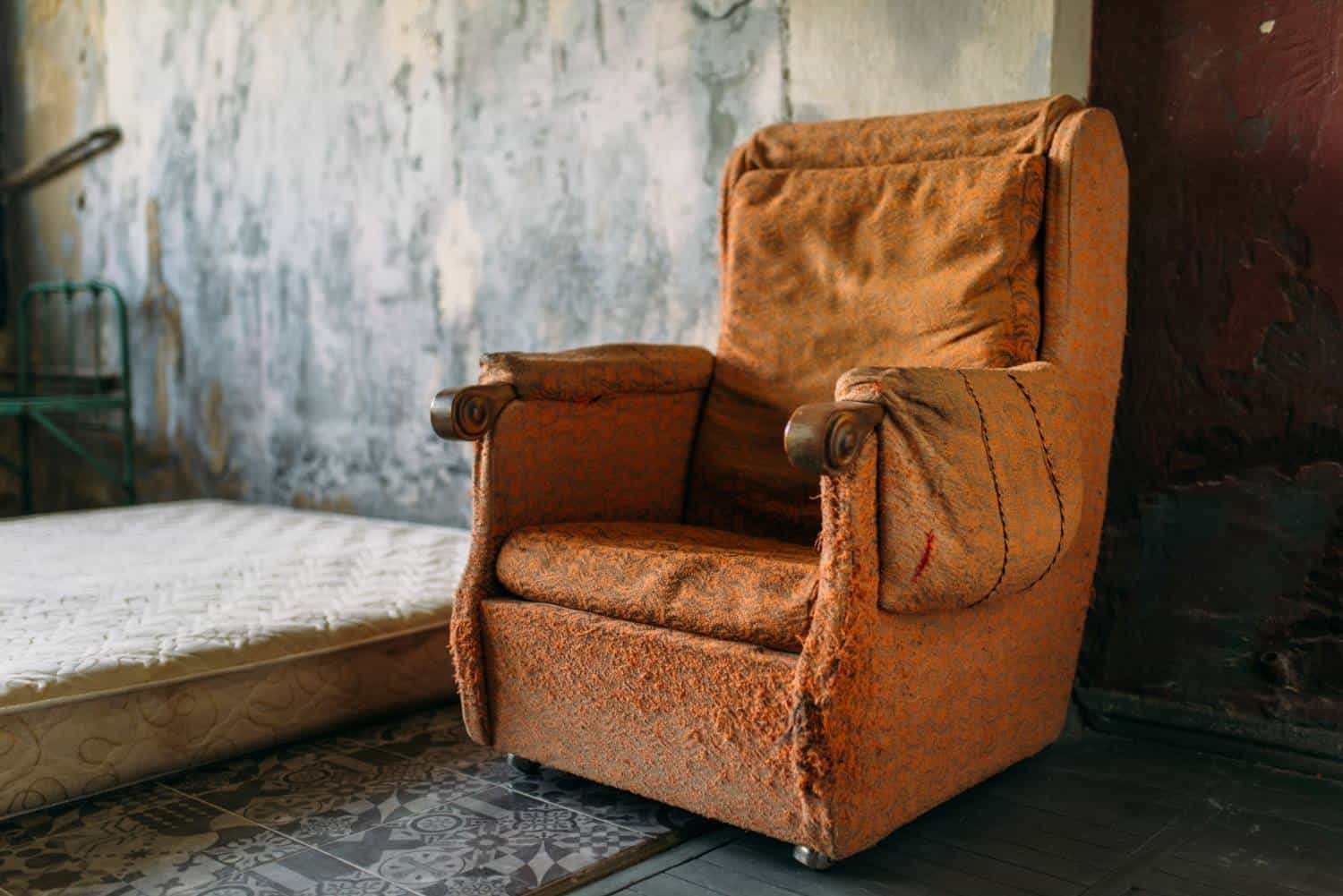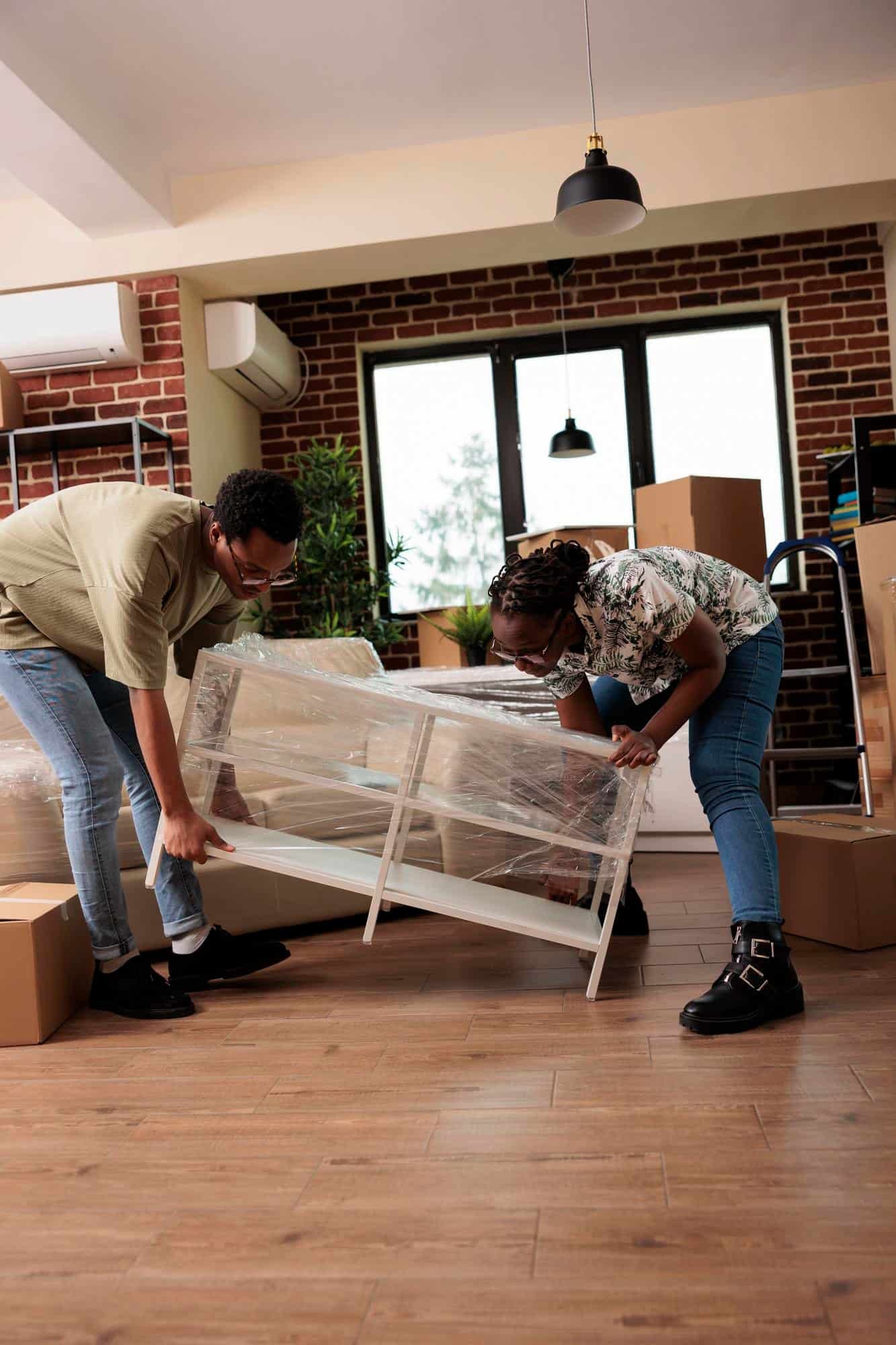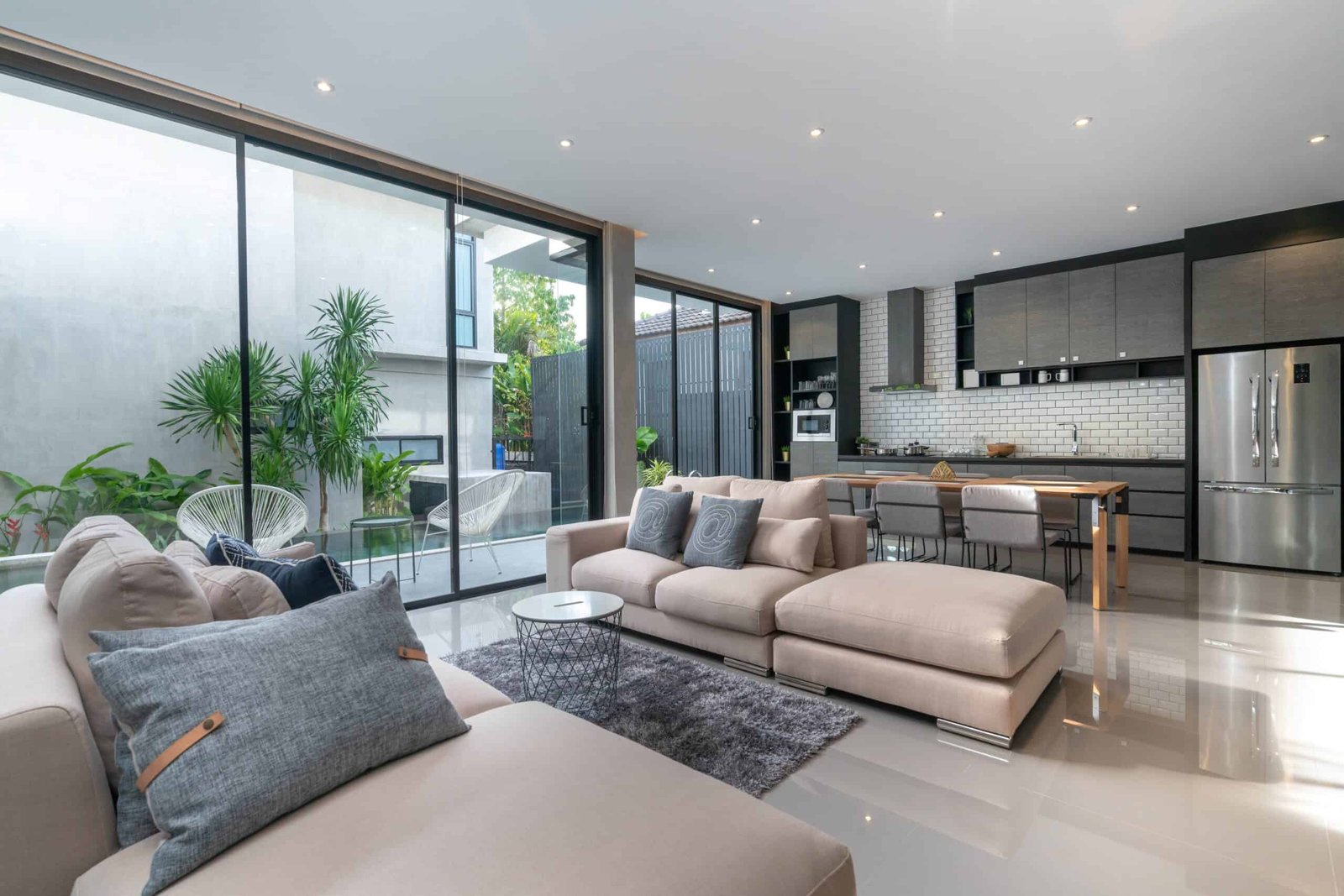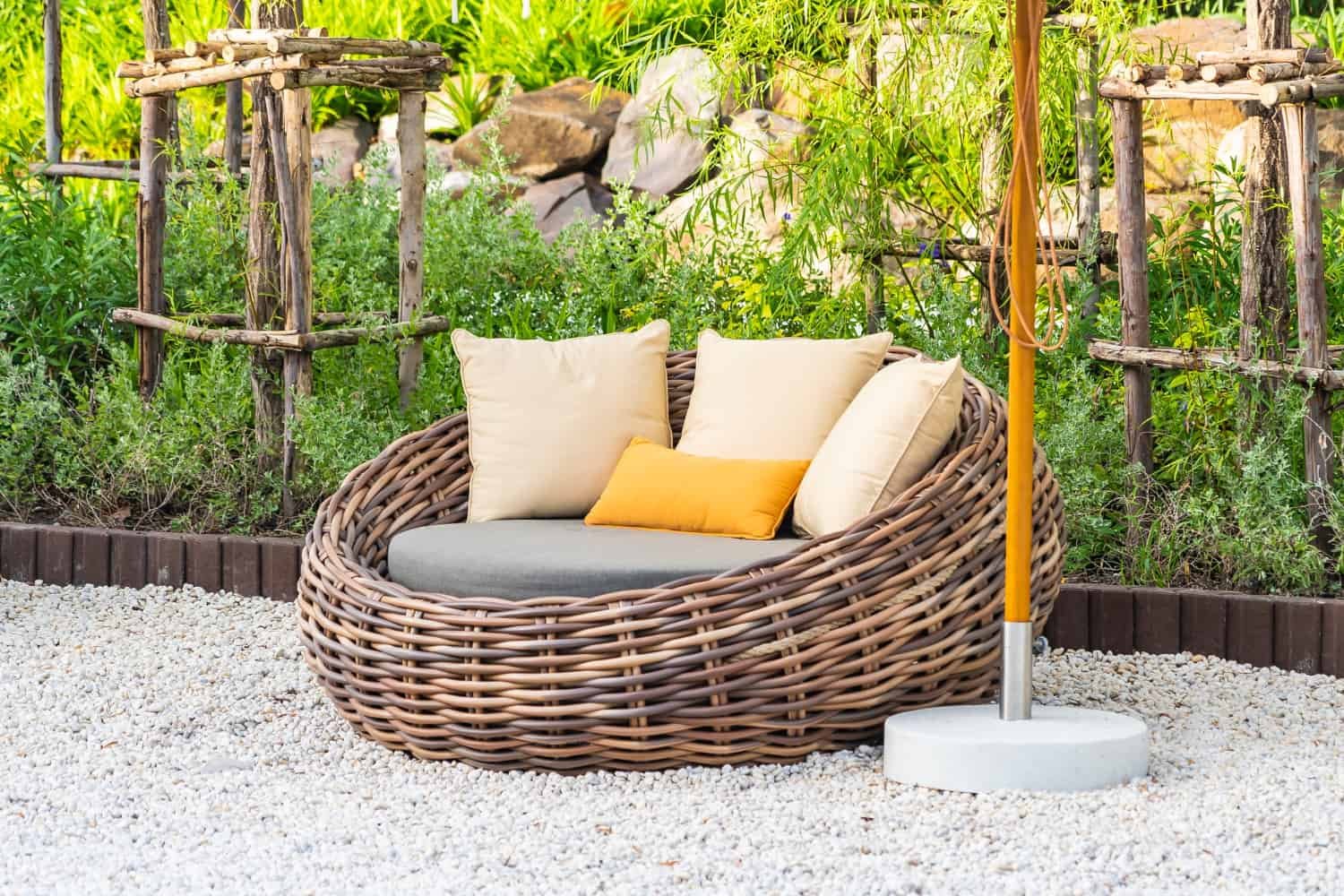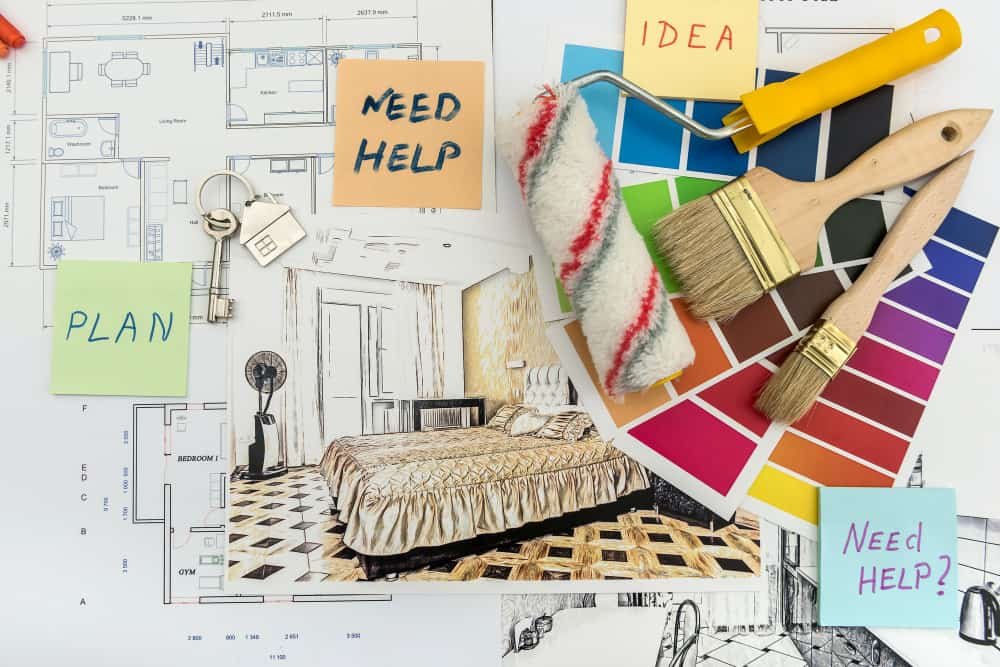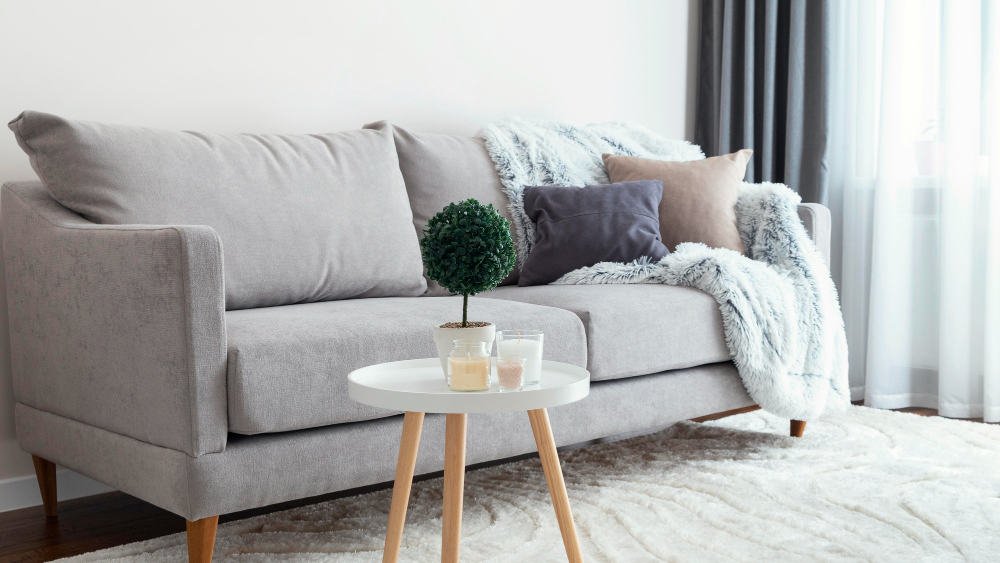
Disclaimer: As an Amazon Associate, “Furniture UK” earns from qualifying purchases.
Top Tips to Consider When Buying a Sofa
Are you looking to add some comfort and style to your living room? Look no further than the perfect sofa. But with so many options, how do you know which one to choose? Selecting the right sofa for your home can feel overwhelming from size to style. However, fear not! With simple tips and tricks, you can find the sofa of your dreams and create the cosy living space you’ve always wanted. So, please grab a cup of tea, get comfortable, and read on for our advice on choosing the perfect sofa for your home.
Consider Your Space
Before choosing a sofa, it is essential to consider the space in which it will be placed. A sofa that is too large or too small for your room can make the area feel unbalanced and uncomfortable. To ensure that your sofa fits well in your room, measure the length and note any architectural features that may impact the placement of your sofa.
One approach to getting the right proportions is to aim for a sofa about two-thirds of the wall length. If you’re using this tactic, remember that sofas generally are around 72, 84 or 96 inches (UK equivalents might be about 175, 210 and 240cm).
Next, ensure your sofa fits in the room and doesn’t block any walkways. Ideally, walkways should be 36″ wide. Once you complete this step, create a seating arrangement around your sofa, leaving about 18″ between your sofa and coffee table. Overall, your sofa’s height, width, and length should complement your space’s size and architectural features.
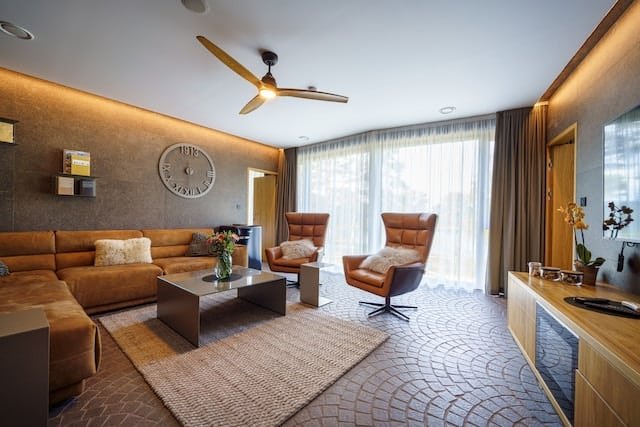
Determine Your Style
Before shopping for a sofa, it’s essential to determine your style. You want to choose a sofa that complements the overall design of your home. If you’re unsure of your style, look around your home for patterns. Do you have a lot of traditional pieces or modern pieces? Do you prefer bold colours or neutral tones?
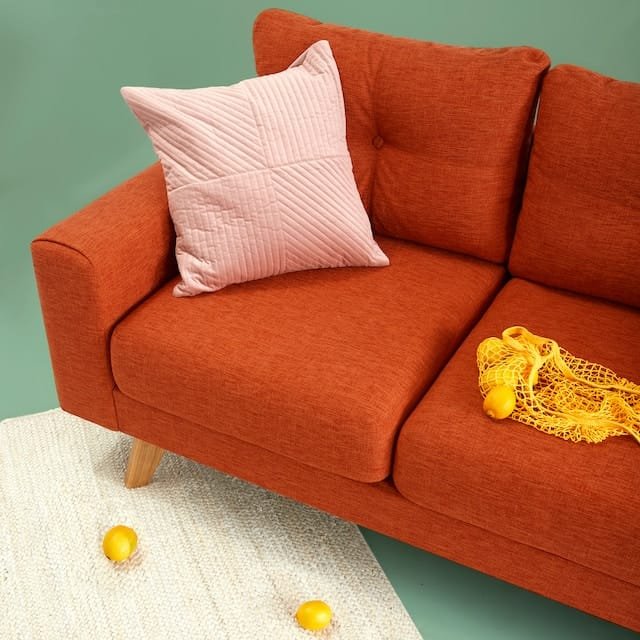
If unsure, you can take a style quiz online or consult an interior designer. Once you have a better idea of your style, you can look for a sofa that fits your aesthetic.
Here are some common sofa styles:
- Traditional: Features ornate details, curved lines, and plush upholstery.
- Modern: Features clean lines, geometric shapes, and neutral colours.
- Mid-century modern: Features low profiles, tapered legs, and bold colours.
- Transitional: A mix of traditional and modern styles.
- Sectional: A large sofa that can be separated into multiple pieces.
When choosing a style, it’s essential to consider the other furniture in the room. You want to choose a sofa that complements the other pieces in the room and doesn’t clash with them.
Choose the Right Material
When choosing a suitable material for your sofa, there are a few factors to consider, such as durability, comfort, and style. Here are some popular sofa materials to consider:
- Leather: Leather sofas are known for their durability and classic look. They are easy to clean and maintain but can be expensive.
- Fabric: Fabric sofas come in a wide range of colours and patterns, making it easy to find one that matches your decor. However, they may not be as durable as leather and can be more challenging to clean.
- Velvet: Velvet sofas add a touch of luxury and elegance to any room. They are soft and comfortable but may be more challenging to clean and maintain.
- Microfiber: Microfiber sofas are popular for families with children or pets. They are durable and easy to clean but may not have the same luxurious feel as leather or velvet.
Pick the Perfect Colour
Choosing the right colour for your sofa is important as it can make or break the overall look of your living room. Here are some tips to help you pick the perfect colour:
- Consider the size of your living room. If your living room is small, opt for a light-coloured sofa to create an illusion of space. On the other hand, if you have a large living room, you can go for a bold, dark-coloured sofa to create a dramatic effect.
- Think about the existing colours in your living room. If you have a lot of neutral colours, you can choose a bold-coloured sofa to add a pop of colour to your living room. If you have a lot of bold colours, it’s best to go for a neutral-coloured sofa to balance out the colours in your living room.
- Consider the style of your living room. If you have a traditional living room, it’s best to go for a neutral-coloured sofa to keep the focus on the classic elements in your living room. If you have a modern living room, you can go for a bold-coloured sofa to add a touch of personality.
Remember, when choosing the colour of your sofa, it’s important to think about your style and what you want your living room to convey. Don’t be afraid to take risks and experiment with different colours to find the perfect fit for your home.
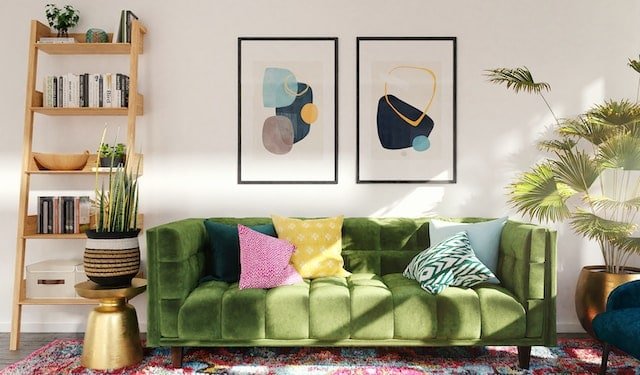
Test for Comfort
When choosing a sofa, it’s crucial to ensure it’s comfortable for you and your family. Here are some tips on how to test for comfort:
- Sit on the sofa and try it out. Spend a few minutes sitting on the sofa to see how it feels. Make sure it’s comfortable for you, and you can sit on it for an extended period.
- Check the seat depth. The seat depth should be deep enough to support your legs and allow you to sit back comfortably. A seat depth of 20-22 inches is ideal for most people.
- Consider the cushion fill. The cushion fill can make a big difference in the comfort of a sofa. Foam cushions are firm and supportive, while down cushions are soft and plush. Test out different cushion fills to see which one feels best for you.
- Check the back support. Ensure the sofa has a high back, and the cushions are firm enough to support your back. The back of the sofa should give adequate support to your back.
- Test the armrests. The armrests should be comfortable and provide adequate support for your arms. Make sure they’re not too high or too low.
Measure for Fit
The size is one of the most important things to consider when choosing a sofa. A sofa that is too big or small for your room can make the space feel awkward and uncomfortable. Therefore, you must measure your room and the sofa to ensure a perfect fit.
- Start by measuring the area where you plan to place the sofa. Use a tape measure to measure the space’s length, width, and height. Make sure to consider any obstacles, such as doors, windows, or radiators, that may affect the placement of the sofa.
- Next, measure the sofa itself. Check the sofa’s dimensions to ensure it will fit through your doorways and into your room. Measure the height, width, and depth of the sofa. Don’t forget to measure the arms and back of the sofa as well, as these can affect the overall size of the piece.
- It’s also important to consider the seating capacity of the sofa. A small three-seater sofa may be more appropriate for a small apartment. However, a larger sofa with more seating capacity may be necessary if you have a large family or frequently entertain guests.
- When measuring for fit, it’s always a good idea to take accurate measurements and double-check them before purchasing. Buying a sofa that doesn’t fit your space can prevent disappointment or inconvenience.
Check for Quality and Durability
When choosing a sofa, it is important to consider the quality and durability of the piece. A well-made sofa can last many years, while a poorly made one may need replacing sooner. Here are some factors to consider when checking for quality and durability:
- Frame: The sofa’s frame should be made of solid, sturdy materials such as hardwood or metal. Avoid sofas with frames made of particleboard or other cheap materials.
- Joints: The joints of the sofa should be solid and secure, with no wobbling or creaking. Look for reinforced joints and corner blocks for added stability.
- Springs: The springs in the sofa should be supportive and comfortable. Look for sofas with eight-way hand-tied springs, considered the gold standard for comfort and durability.
- Cushions: The cushions should be firm and supportive, with no sagging or lumps. Look for cushions made of high-density foam or down-wrapped foam for the best combination of comfort and durability.
- Upholstery: The sofa’s upholstery should be durable and easy to clean. Look for leather, microfiber, or tightly woven fabrics that withstand wear and tear.


